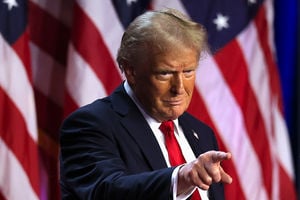Let’s turn our Kenyan cultures into a positive force nationally

Makueni Governor Kivutha Kibwana (right) walks alongside Boniface Kilonzo, the chairman of Akamba Clans Governing Council, an association of the 22 Kamba clans, at Wote Town in Makueni County on July 23, 2021.
What you need to know:
- In Kenya, as in many African countries, we are yet to isolate and aggregate the best cultural traits and practices of each ethnic community.
- Most of our Kenyan ethnic groups have rich cultural content which if harnessed, taught and implemented, will be a veritable asset to the group and, ultimately, Kenya.
Recently the Kithio kya Mukamba Women group, practitioners of Kamba Traditional Religion, trooped to Makueni county’s headquarters with a petition to the governor.
They warned of imminent failure of the October rains unless the priests were facilitated to the tune of four bulls, four goats, four sheep and four chicken to perform ritual blood sacrifice.
The women also conveyed an eerie message that no Muukamba will ascend to Kenya’s presidency until the community makes peace with Kinyaa (Mount Kenya). According to these seers, Kamba men married Gikuyu and Mumbi’s nine daughters and therefore the Kamba people must, through a special sacrifice in Kinyaa itself, reunite with their relatives. Only then will leadership descend from Kinyaa to Weu (the plains).
The above organisation’s objectives include: combating witchcraft; conservation of water resources; protecting women from early marriages as well as unexpected pregnancies; advocating children’s education irrespective of gender or disability status; protection of youth against drugs and alcohol; advising the youth to form social and economic groups.
I know this group, which is often mocked as a “satanic minded group”, advocates against deforestation especially in the vicinity of their shrines.
I have told this story to illustrate that we often focus on the ugly side of ethnicity. There is a positive face of ethnic culture which if embraced can make our country a better nation.
Both Articles 7 and 11 of Kenya’s 2010 Constitution recognize culture as the cumulative civilisation of the Kenyan people and guarantee protection of Kenya’s languages, including indigenous ones.
Notwithstanding such recognition of ethnic culture, it has been largely weaponised by the political elite during the electoral season.
Cultural groups
Francis M. Deng defines ethnicity as “the embodiment of values, institutions and patterns of behaviour, a composite whole representing a people’s historical experience, aspirations and worldview”.
Deng observes that African societies in the pre-colonial era were administered through “an elaborate system based on the family, the lineage, the clan, the tribe and ultimately a confederation of groups with ethnic, cultural and linguistic characteristics in common.”
The colonial and post-colonial order raptured the above governance structure. The first crop of African leaders shunned tribal affiliation as divisive. Cultural identity was sacrificed, ostensibly to usher in nationhood. Up to the present, African nations are still grappling with how to integrate multiple ethnic identities.
In Kenya, as in many African countries, we are yet to isolate and aggregate the best cultural traits and practices of each ethnic community to cumulatively establish the cultural values of an emerging nation. Such an exercise would still leave room for each ethnic community to practise its legitimate culture.
Broadly speaking, in Kenya there are two types of cultural groups.
In the pre-colonial era, most ethnic groups had an elders’ council whose main roles were to be custodians of the community’s culture and adjudication of disputes among community members. When necessary, such councils would come together to arbitrate inter-ethnic community disputes. The Njuri Ncheke of the Ameru, the Kayas of the Coast, Kikuyu Council of Elders, etc, are a few examples of the first elders’ councils category.
After Kenya’s 2007/2008 electoral debacle, the state spearheaded the formation of a new type of elders’ councils in all the then existing districts to create a mechanism for resolving ethnic conflicts among the country’s diverse communities.
In some districts, a traditionally existing council of elders was transformed into these state initiated councils or entirely new councils were formed under the wings of the then provincial administration.
Traditions and customs
The post 2007/2008 councils have tended to focus on mending inter-ethnic disharmony instead of the nurturing their respective groups’ culture. That leaves the mandate to resolve internal disputes and deal with other cultural matters to the older genre of cultural groups.
These post 2007/2008 councils are federated under the Kenya National Council of Elders. Recently the national council has engaged the country’s political kingpins to dissuade them from threatening Kenya’s fragile peace.
Let me use the example of the Kamba to demonstrate the country’s cultural governance set-up. They have three main cultural groups: Ukambani Council of Elders, the Akamba Clans Governing Council of Clan Elders and Atumia Ma Thome.
The above three groups joined a separate entity comprising the leadership of the Ukambani religious denominations to form the Akamba Leaders’ Forum, chaired by Archbishop Timothy Ndambuki.
This council’s key objectives are to unite all the Akamba clans; preserve all valuable clan traditions and customs; to arbitrate and reconcile clan members on disputes devoid of costly legal expenses; to ensure discipline, peace and harmony within the community; to empower Akamba clans economically; etc.
Any clans’ council organ must comprise at least one third of the female gender.
If a person is accidentally killed (manslaughter), “blood price” compensation for both a man or a woman is equal: 14 head of cattle. Children born out of wedlock are recognised as legitimate, having the right of inheritance from their mother’s share. Women — both married and unmarried — have a right to inheritance.
Aged parents and children must be taken care of by their family members and the community at large.
Rich cultural content
The clan council recognises the role of women in clan activities, unlike in the past. The council disallows the practice of witchcraft or keeping of “genies”.
Mockery and insults are deemed punishable offences. The youth must respect the aged and vice-versa. The council totally rejects girl-child (female genital) mutilation (FGM).
Shrines are recognised as holy places by those who believe in them and cutting of trees in a shrine is a crime.
Excessive drinking and use of intoxicating drugs are forbidden.
Insanity is recognised as mental illness. Any mentally ill person must be taken care of by the family and clan.
In my view, if the above examples of good cultural practices are implemented fully, greater social cohesion within the Kamba nation would ensue.
Most of our Kenyan ethnic groups have rich cultural content similar to the above, which if harnessed, taught and implemented, will be a veritable asset to the group and, ultimately, Kenya. Our social and political scientists can distil the positive aspects of our cultures to become common patrimony.
Among the Somali, clan leadership usually vets and determines political leadership. The Nandi Talai clan’s conferment of elder status is prized. In many Kenyan communities, support from a majority clan or a collection of clans can deliver electoral victory.
It is therefore time to reconfigure how we deploy our ethnicity both at the micro and macro levels. Let us isolate the cream of our cultures to create a national inter-ethnic culture. Let each ethnic group use the positive aspects of its culture to grow its own community. Let us entrench devolution or quasi-federalism to assure equitable distribution of development, public offices, public contracts – in a word national wealth.





